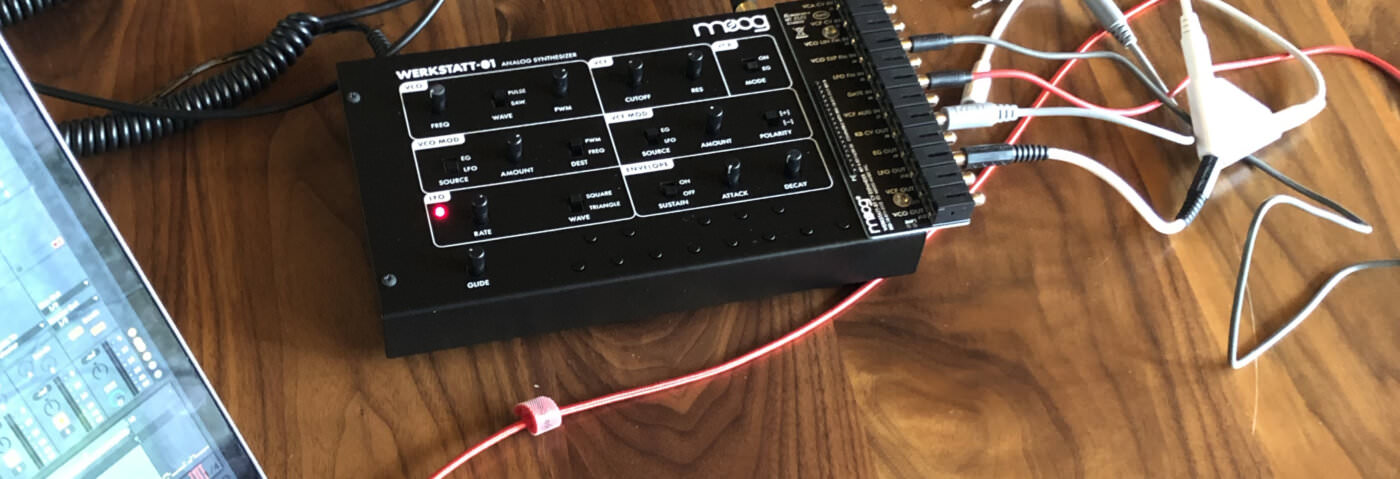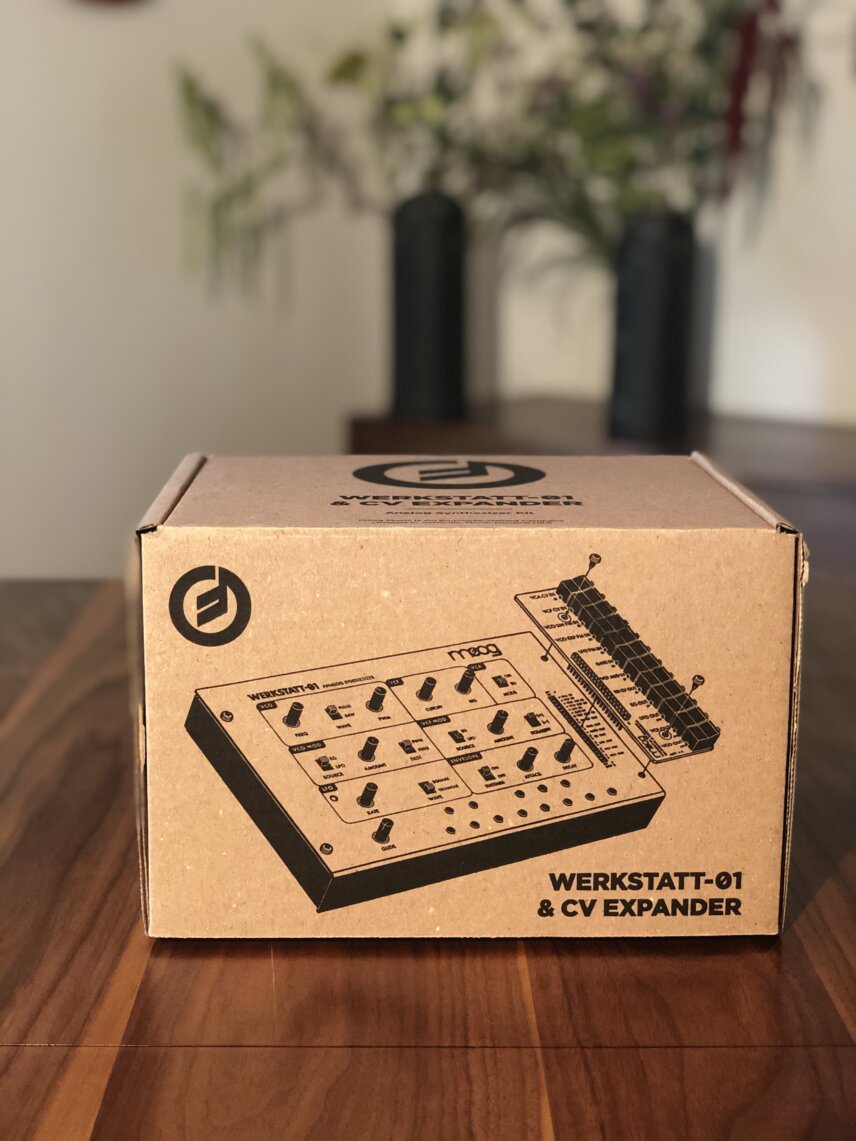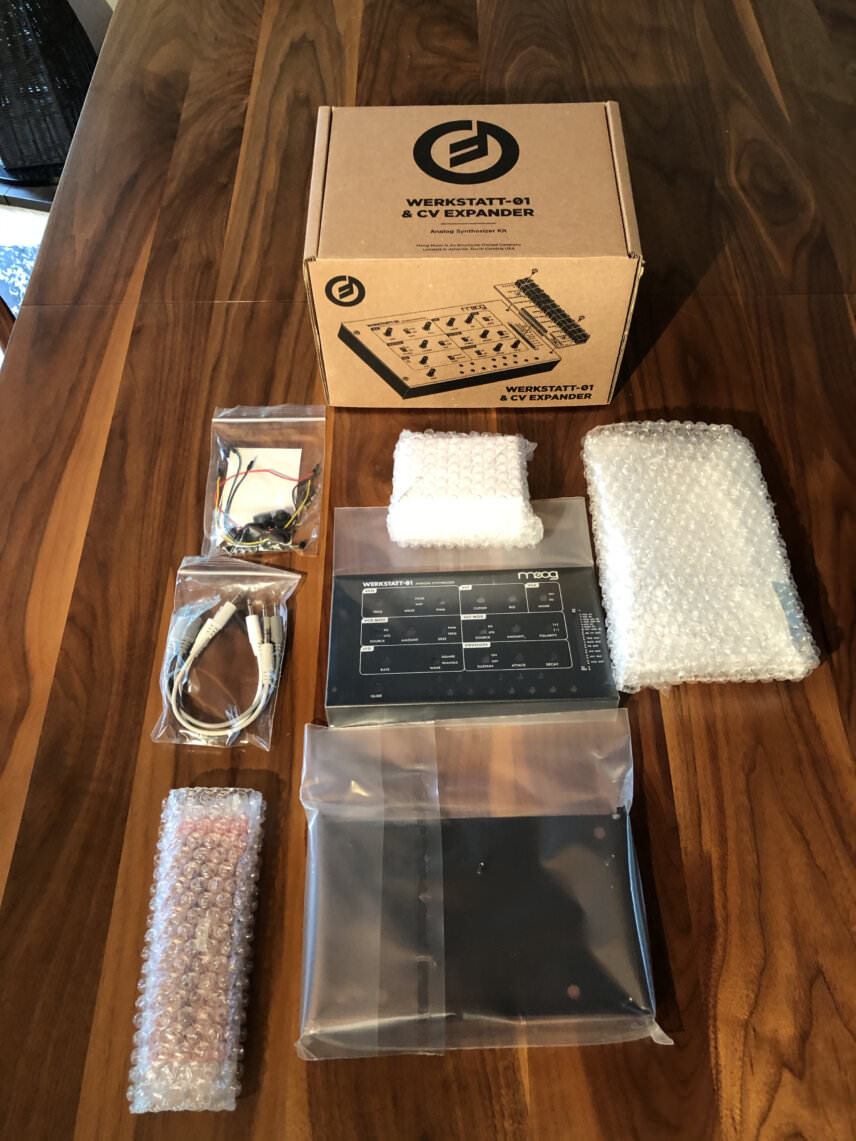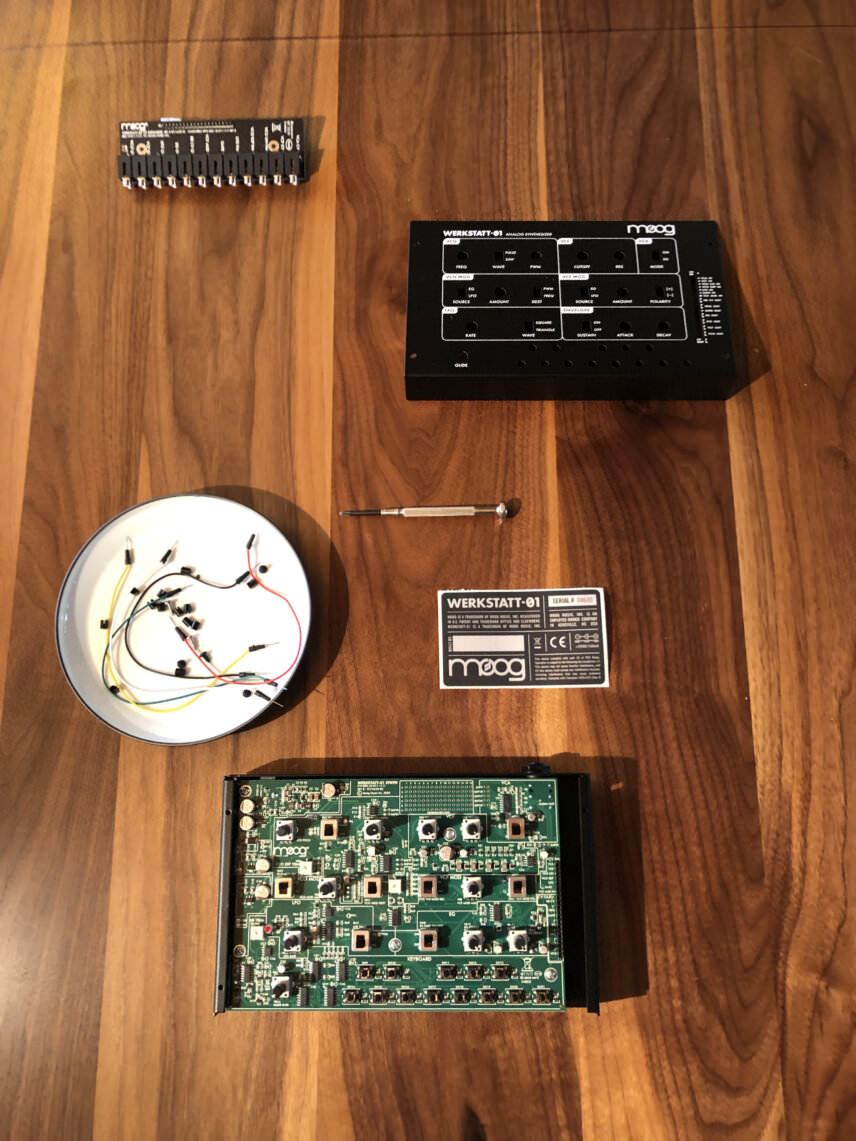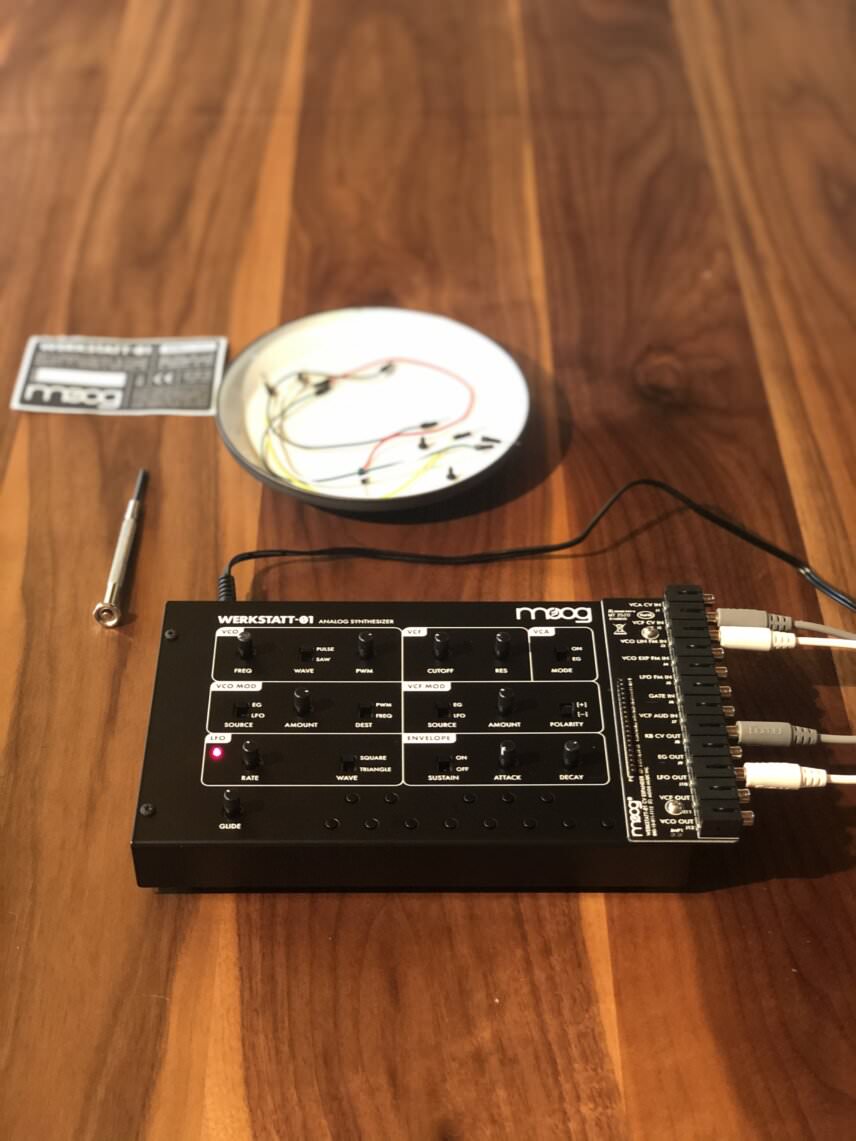Is it really possible to get the coveted Moog sound for around £200? Darren Selement investigates the Werkstatt-01 and finds out.
The Werkstatt-01 with CV Expander is a semi-build-it-yourself kit for an analogue Moog monophonic semi-modular synthesizer. Is it a toy? Is it DIY? What is a CV Expander and why include it? Those are important questions but the one that matters the most is: can this little device deliver the Moog Sound at an affordable price or does something get lost in translation?
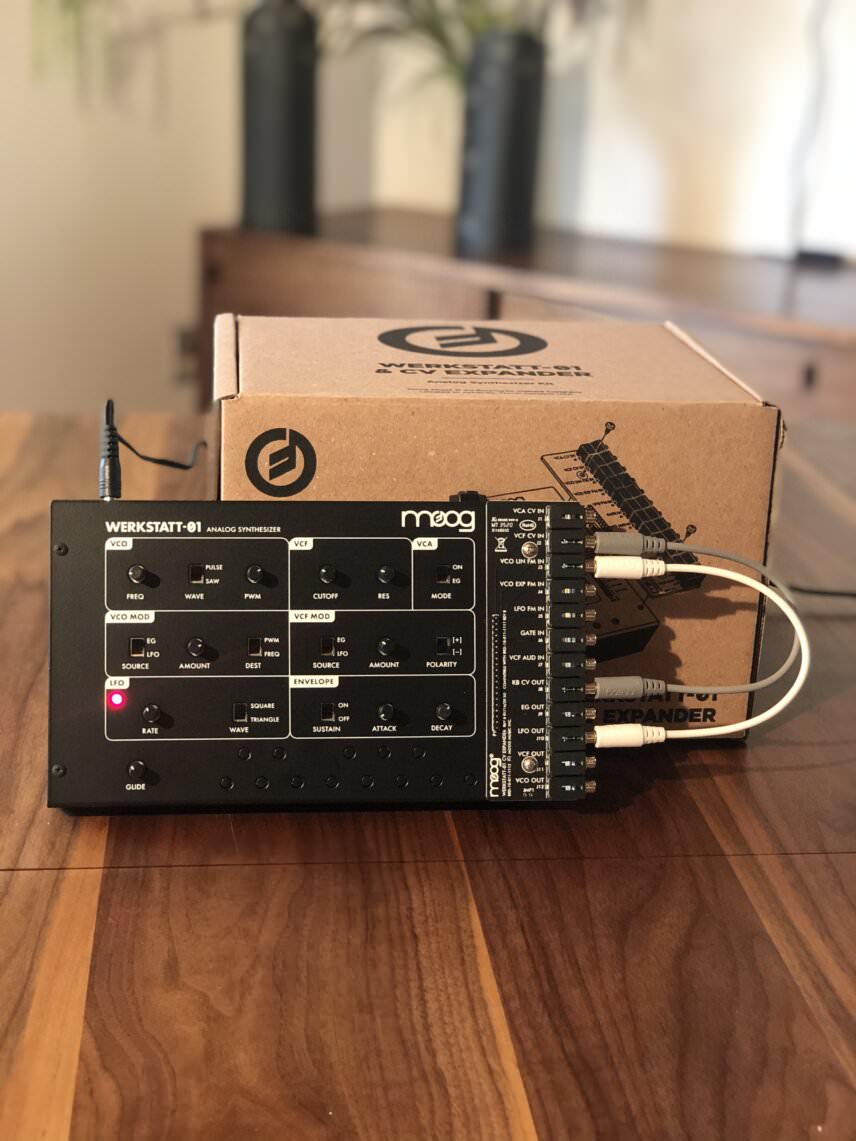
Translation
“Werkstatt” in German means, basically, workshop. This machine isn’t pure DIY. There is no soldering iron required. The user still has to put it together.
While I have created contact mic triggers and multi-plug adapters for my Eurorack rigs, if a synth broke, my version of DIY meant Drive-It-Yourself to the tech. I was glad the instructions for the Werkstatt clearly stated to make sure everything lines up before tightening too tight. Otherwise, I would have left a screw out and nobody likes a leftover screw hanging about after a build is finished. Ikea, are you listening?
Fifteen minutes later the machine is built, but those fifteen minutes are significant.
Every hardware synthesist admires the blinking lights and mysterious aesthetics of the boxes that draw us closer to sound. To assemble a machine like the Werkstatt-01 offers a glimpse behind the curtain, even if I don’t understand the secrets. When I plugged it in and a Moog-like sound came out I wondered if the translation of Werkstatt-01 implied building not only the foundation and framework of a synthesizer but the sound.
Sources and Destinations
In classic Moog form, everything is clearly labelled. There are no fancy symbols to cryptically denote the function of any given knob or switch. As long as EG means Envelope Generator and MOD means modulation, there are few short cuts. The first three rows make up the basics of a sound. The fourth row includes an octave long push-button keyboard and a glide knob.
It is hard to get lost creating a sound on this perfectly mapped front panel.
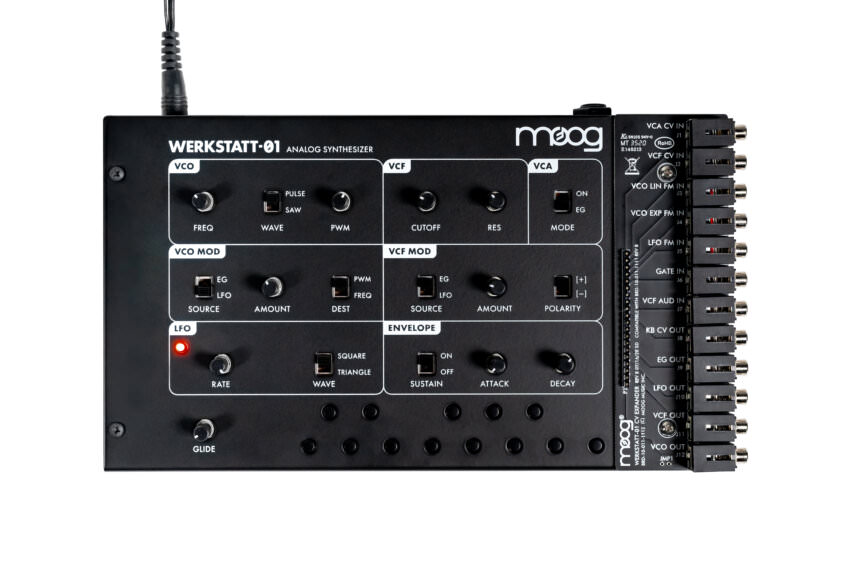
Starting at the top left the map begins with a VCO (Voltage Controlled Oscillator). There are two waveform choices, Saw or Pulse, along with a frequency knob and Pulse Width Modulation control. The pulse wave, as it should be, sounds huge. The VCO leads into the VCF (Voltage Controlled Filter) with its classic 24dB ladder filter, which is followed by the VCA (Voltage Controlled Amplifier). The VCA can be controlled by the envelope or set to constantly on with a flip of a low-lying plastic switch. The VCA in the ON position leads to beautiful drones.
Complaint #1. I love the metal toggle switches on Moog’s DFAM. They feel substantial and are silent if flipped in mid-patch. The low plastic switches on the Werkstatt-01 can be slippery to flip on the beat and silence isn’t always their virtue. I’m not sure how many users would attempt to flip from ON to EG in the middle of a drone patch but a static click cut through the recorded sound. The DFAM’s seamless silver toggles rarely had this problem.
The second row of the map starts with a VCO Mod that leads to the VCF Mod section. Again, every source and destination is clearly marked. If the definition of polarity was ever a question in synthesis, a quick flip of the switch from positive to negative quickly offers the answer: the sound/envelope inverts. That little switch, when used in tandem with certain destinations, is a wonderful tool.
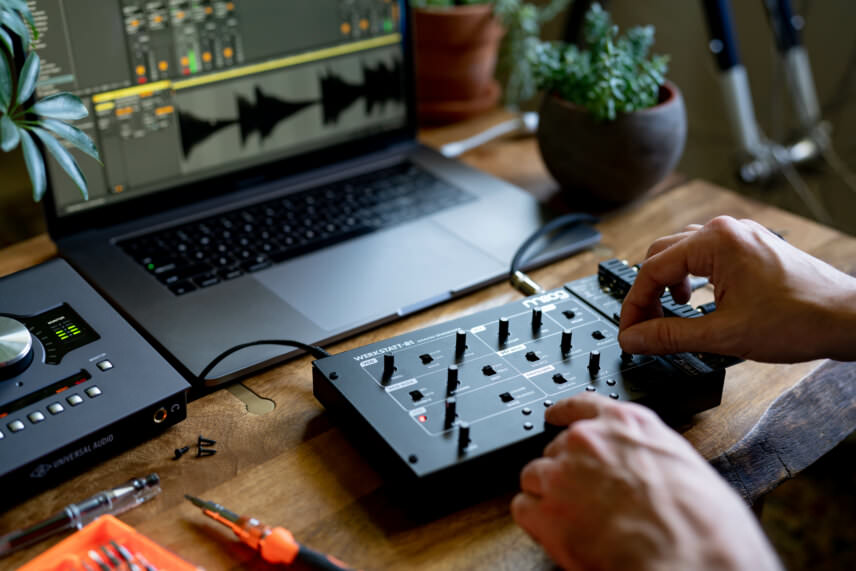
Complaint #2. In a machine of this size, the issue is understandable, but the small knobs require a bit of nuance, especially when trying to match Frequency and FM LFO.
Side note: By increasing the Resonance and cutting the Cut-Off on the Werkstatt Voltage Controlled Filter, the VCF will self-oscillate and create a sinewave that functions as a second sound source. This is a handy trick on a monophonic synth and in modular synthesis striking a VCF can be great for kick drums and plucks.
The third row contains the jesters of sound. If the VCO and VCF in the first row are the king and queen in the hierarchy of analogue synthesis, the LFO and Envelope are there to make them laugh, cry, grind and whine, and sometimes spit up all over themselves. The third row in the Werkstatt-01 does its job very well.
However.
Due to the way the Werkstatt is hardwired either the LFO or the Envelope Generator can modulate one of the Royals (the Oscillator or the Filter), but not both. There is an answer. It is simple. It returns to why Voltage-Controlled-Anything has been repeated throughout this review.
The Gateway
Seven inputs. Five outputs. Six patch cables.
The CV Expander is a gateway in so many ways. It is also the answer to having both the LFO and EG modulate the oscillator or filter (the king and queen of sound). Plug the clearly marked LFO Out into the VCF In with a single patch cable and suddenly modular synthesis solves the problem.
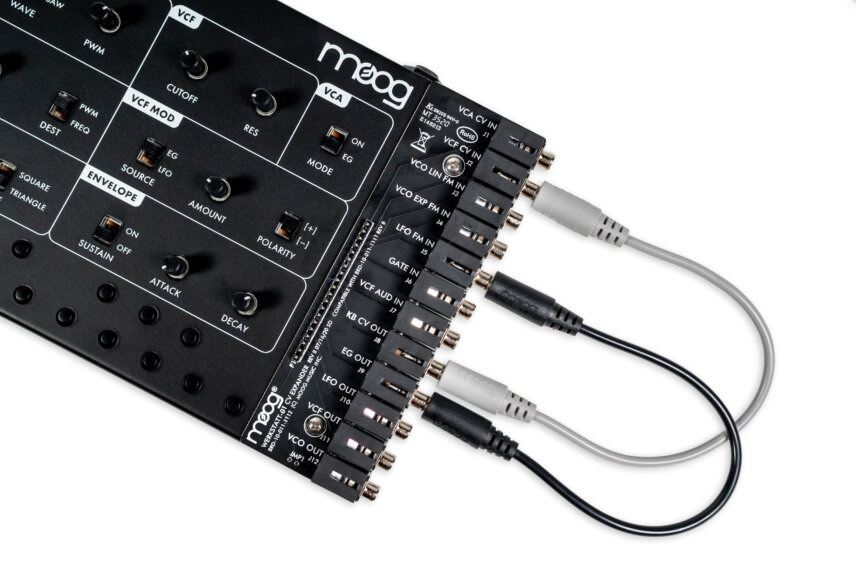
I won’t dive into how Eurorack works but there is a reason Voltage Control (CV in the Eurorack format) has been repeated throughout this review. Although the Werkstatt can do good damage on its own with the patch cables provided, things get far more interesting when Control Voltage is sent from a source into the circuit-bent looking CV Expander.
Link a KeyStep with Ableton, patch the Gate and CV Out into the Werkstatt’s Gate and VCO FM In, and suddenly octaves of sound are available. Patch the modulation out of the Keystep into the CV Expander’s VCF and the mod slider controls the filter.
When I patched my 7U 104HP rig into this little machine the analogue CV thunder started. Send a Sample and Hold into the VCF, clock the LFO with an external source, and patch a randomized CV Sequence into the VCO FM In and the Werkstatt begins to touch the atmospheres of Aphex Twin and Autechre.
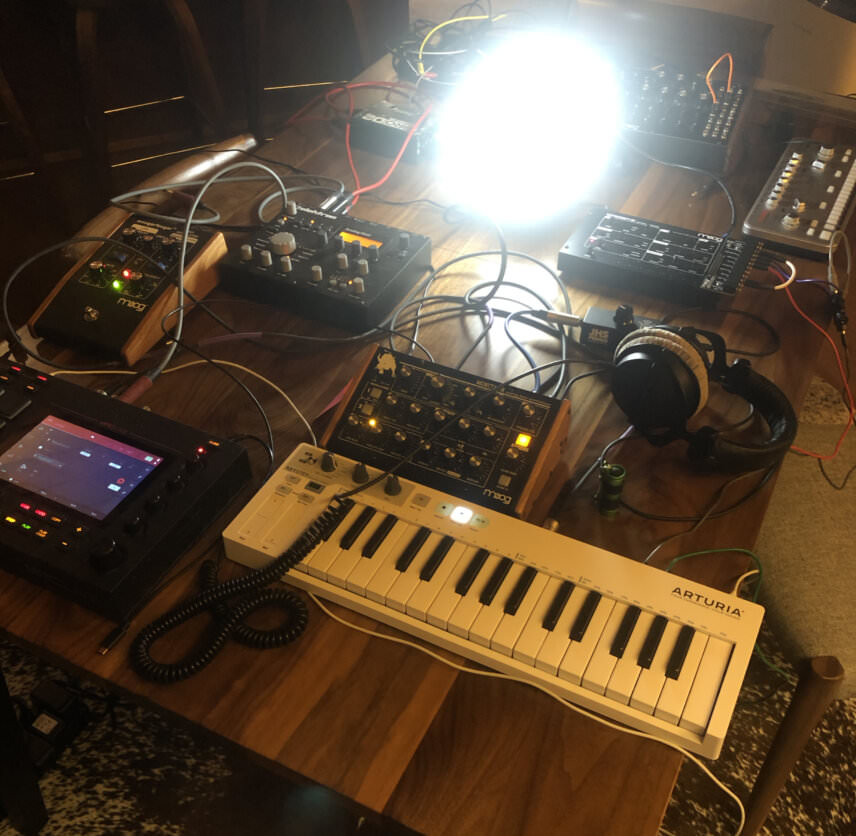
The seven inputs and five outputs offer many opportunities to turn a monophonic machine into a cantankerous, almost duophonic synth, or easily channel everyone’s inner Giorgio Moroder.
Chequebooks and dreams beware; the CV Expander on the Werkstatt is a Gateway into a modular future with and without control. They don’t call it Eurocrack for no reason. I’m not judging.
24dB Ladder Filters & Conclusions
The first time Gary Numan put his hands on a MiniMoog Model D in a studio, he said, essentially, “I didn’t know how to use it. The engineer showed me how and it made that low growl. That Moog sound. It was an earthquake, powerful, and I just loved it. Before the band was even finished setting up the gear in the studio I’d changed everything for the record.”
This review began with similar questions. There is one big one left: Does the Werkstatt-01 sound like a Moog? In short, yes. Will it thump like a Minitaur or scream like a MiniMoog Model D? It costs fractions of either machine. Sometimes price matters. Yet, once again, Moog has devised an analogue synth that can cut and boom through a mix. This time their nifty little device comes at an extremely affordable price (all gateway inferences aside).
Christmas anyone?
The Verdict
Price: £205
Purchase: Moog Werkstatt-01 And CV Expander
The Final Word
Moog sound. Budget price. A gateway machine to modular synthesis. From novice to experienced, plug-in patron to hardware purist, the Werkstatt-01 will find a place in any rig or studio from the foundation up.
*Attack Magazine is supported by its audience. When you purchase through links on our site, we may earn an affiliate commission. Learn more.
